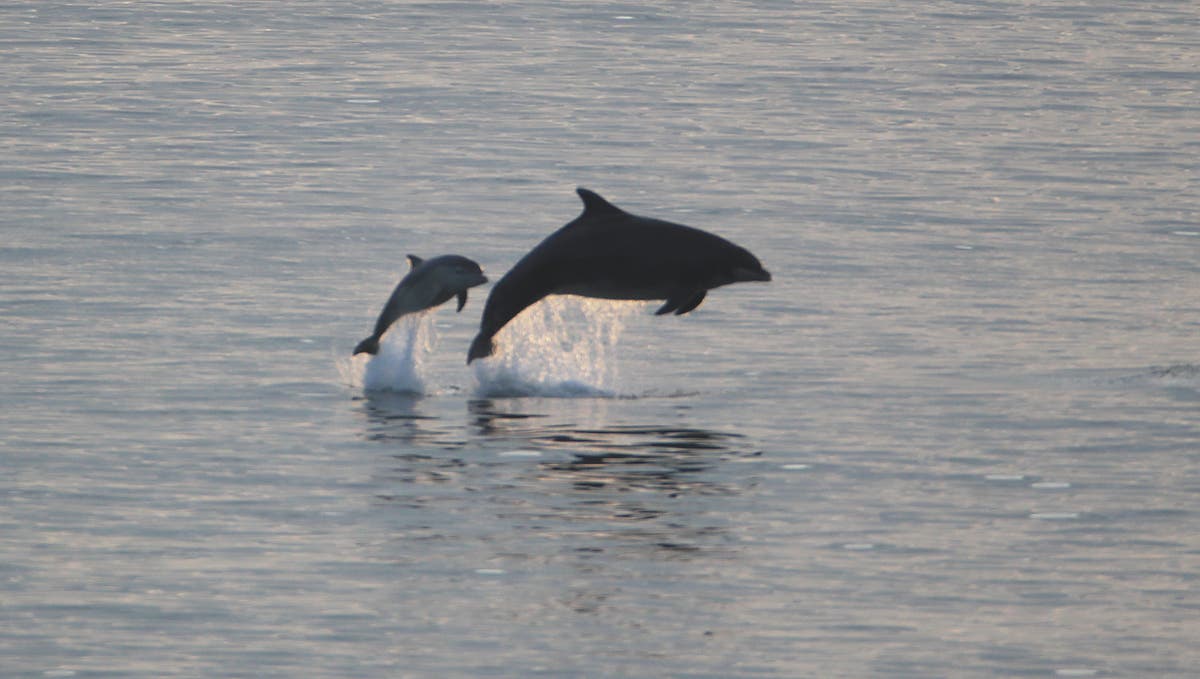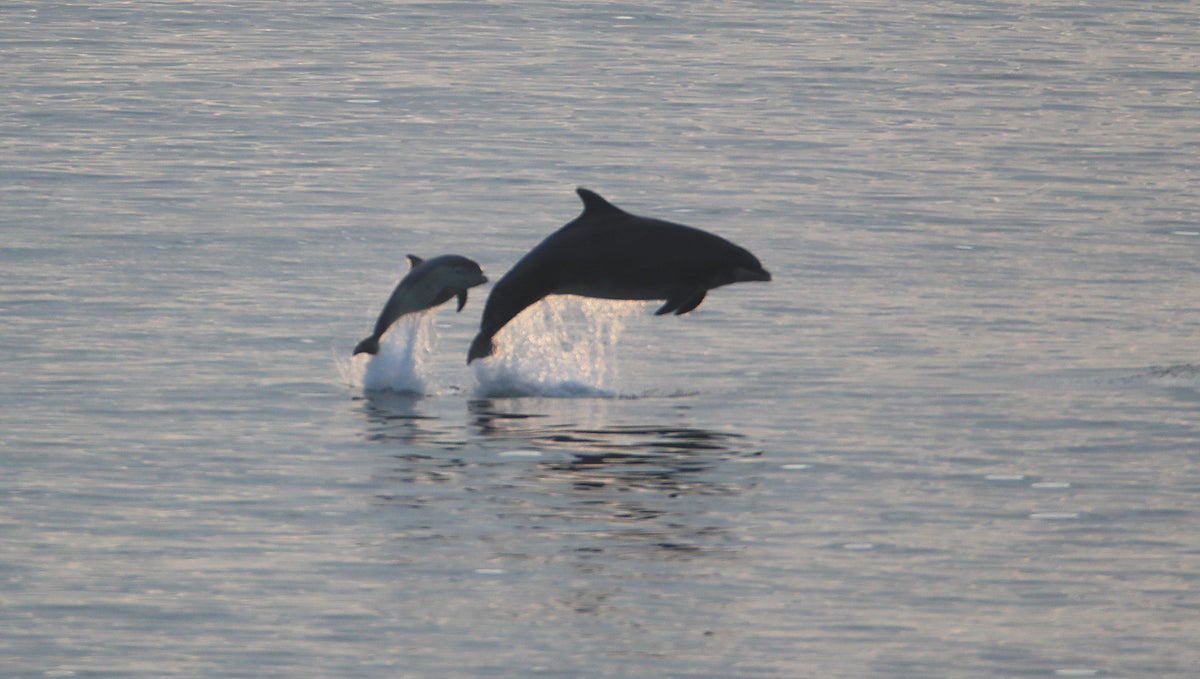Individual bottlenose dolphins are recognised by their signature whistles that have an “influence of their region,” a new study suggests.
Researchers, including those from the University of Sassari in Italy, assessed the signature whistles produced by six distinct geographical units of the common bottlenose dolphin (Tursiops truncatus) in the Mediterranean Sea to determine the main cause of their variability.
Signature whistles produced by bottlenose dolphins in the Mediterranean Sea, some of which are used to recognise individuals, maintain contacts, and coordinate between groups, are determined by the local ocean environment and population demographics, the research, published last month in the journal Scientific Reports, noted.
They found that the local ocean environment as well as population demographics, and not genetics, best explains the different lengths and pitches of the whistles.
Cetaceans, a group that includes whales, dolphins, and porpoises, rely on acoustic communication in the form of whistles for orientation, locating food, reproduction, and avoiding predators.
“Acoustic signals are widely used in animals, from insects to mammals, and can be involved in a variety of contexts such as sexual selection, social cohesion, individual and group recognition, resource defense and competition,” Gabriella La Manna, a co-author of the study from the University of Sassari, explained.
Previous studies have found that dolphins have a varied and complex acoustic repertoire, used to transmit information related to the sender identity – individual, social group, population, species – sender position, as well as behavioral contexts.
Some cetacean species “produce individual signals aimed to identify the emitter,” such the bottlenose dolphins (Tursiops spp.) scientists say.
Many species, they say, also have acoustic repertoires that can identify a family group or a population like killer whales (Orcinus orca) and sperm whales (Physeter macrocephalus).
“Bottlenose dolphins live in fission-fusion societies where individual recognition, contact maintenance, and group coordination are mediated by frequency-modulated, narrow-band acoustic signals, called whistles,” Dr La Manna said.
“Those whistles characterised by a stereotyped frequency modulation pattern and used to identify the emitter are known as signature whistles. They are primarily produced when an animal is separated by the conspecifics and to ensure social cohesion,” she added.
The signature whistle develops during the first year of a dolphin’s life, researchers say.
In the new study, scientists analysed the differences in signature whistles between six geographically distinct populations of common bottlenose dolphins across the Mediterranean Sea.
The studied sites included Port Cros in the French Riviera, Alghero in the Sardinian Sea, and Ostia-Fiumicino in the Tyrrhenian Sea, Cres-Losinj in the Adriatic Sea and the Gulf of Corinth in the Ionian Sea, as well as Lampedusa in the Strait of Sicily.
Researchers identified 168 individual signature whistles and mapped variations in acoustic features such as duration and changes in pitch.
They assessed the influence of region, geographic site, the local ocean environment – whether the sea bottom was muddy or covered in seagrass – and the effect that population demographics had on differences between signature whistles.
“The local ocean environment and population most strongly influenced signature whistle variation,” scientists noted.
Citing an example, they said signature whistles in areas with seagrass, such as Lampedusa and Port Cros, were higher-pitched and shorter in length compared to when the sea bottom was muddy.
In small populations of the dolphins, such as in the Gulf of Corinth, they said signature whistles had more changes in pitch than among larger populations.
“In contrast, region — and therefore genetic variation — had no strong influence on whistles,” scientists added.
They say the findings support the hypothesis that bottlenose dolphins develop signature whistles best suited to their local habitat.
Citing the limitations of the study, researchers said data on ambient noise and vessel traffic were not available for all sites, adding that noise levels caused by vessels may have had a strong influence on whistle structure.
Researchers call for further studies to assess the identity of the signature whistle emitters, their acoustic environment, and the social relationship between them.
The new study follows another recent discovery that these dolphins also recognise their friends and family, without seeing or hearing them, with a unique ability to taste.
In this study, scientists tested how individual dolphins reacted to urine samples from different individuals to see if they were able to distinguish between friends and strangers.
They found that dolphins explored urine samples for longer if they came from known animals, or when they were presented together with the dolphin’s unique and distinctive signature whistle.







More Stories
New vaccine may hold key to preventing Alzheimer’s, scientists say
Just 1% of pathogens released from Earth’s melting ice may wreak havoc
Europe weather: How heatwaves could forever change summer holidays abroad